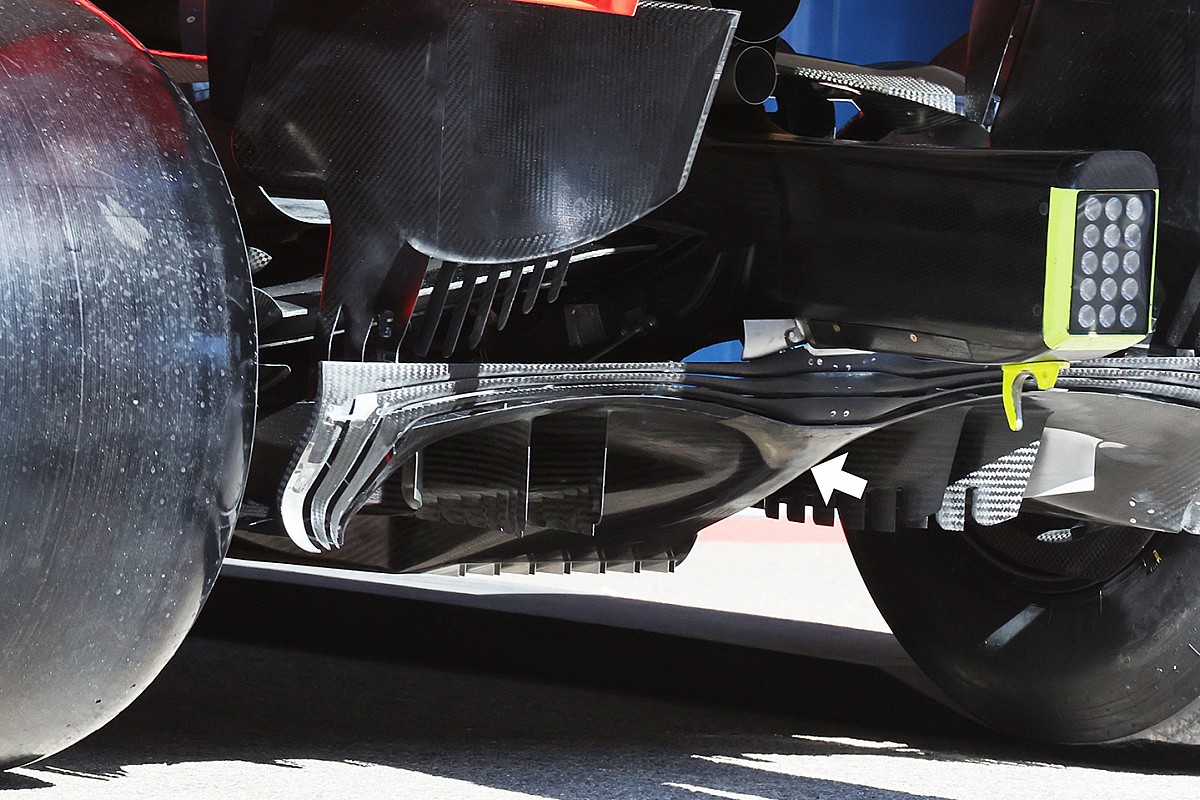The changes are especially interesting because rather than focusing on one particular area of the car, as is usually the case when new parts arrive, the changes are extensive from front to back.
Max Verstappen was tasked with testing the parts during Friday’s FP1 session whilst Sergio Perez ran the car in the old configuration, as the team made sure it was getting the performance uplift it expected.
Once it had that confirmation, Perez’s car was fitted with the parts for FP2 and they’re now expected to stay on the car for the rest of the weekend.
A small detail change has been made to the front brake duct, with an extra vertical divider placed in the upper section of the inlet.
PLUS: The data that leaves both Red Bull and Mercedes uncertain of supremacy at Portimao
This optimisation is about channelling the airflow more efficiently into that central inlet and delivering the airflow it collects to the designated section of the brake assembly.
This is more likely about the airflow behaviour as the wheels are steered, because the oncoming airflow behaves differently but their requirement remains the same.

Red Bull Racing RB16B brake duct detail
Photo by: Giorgio Piola
The changes made to the bargeboards and sidepod deflectors are significant in terms of optimising the flow under the car’s floor and along its flank.
Starting with the bargeboards, the row of fins that make up the front edge of the footplate have been modified extensively, with not only the number of fins increased but also their angle of attack (red arrow) has been altered.
Meanwhile, the outwardly angled fins atop them have been adjusted too, with the second row made into a trio of fins, rather than just a pair.
The really big and quite noticeable change comes in how Red Bull has optimised its deflector array, with each change resulting in a knock-on effect that has required the whole assembly to be reconfigured.
The forwardmost vertical deflector (highlighted in red) is now a two-piece affair, with a slot running almost the entire height of the element.
It also connects with the front section of the floor’s axehead, rather than hovering over it and being attached to the outer section of the bargeboard.
This has resulted in the Venetian blind-like slats having to be overhauled too, with the ones connected to the forward deflector lengthened as a consequence (highlighted in blue).

Red Bull Racing RB16B deflectors
Photo by: Uncredited
To work the airflow harder further downstream, changes have also been made to the rearward vertical deflector, as where it previously hung over the floor it is now attached to it (extension highlighted in green).
This has resulted in what was previously the lowermost slat in the gentian blind panel being extended rearward too (highlighted in blue), whilst another full length slat has been added beneath (highlighted in yellow).
The pair of detached floor scrolls mounted on the edge of the floor behind this have also been revised, as they now meet with the angled floor strake to create a choke point.
Red Bull has made a change to the central section of the diffuser too (lead image), narrowing the ramped section that leads up from the plank on the reference plane.
This narrower boat tail section of the diffuser will obviously open more room for the airflow under the car but also pinches the channel that’s created under the crash structure on the top of the floor.
Meanwhile, the Gurney-like extensions that run around the diffuser’s periphery have also been subtly amended, with the metal bridging support revised in order to handle the loads differently.
shares
comments
